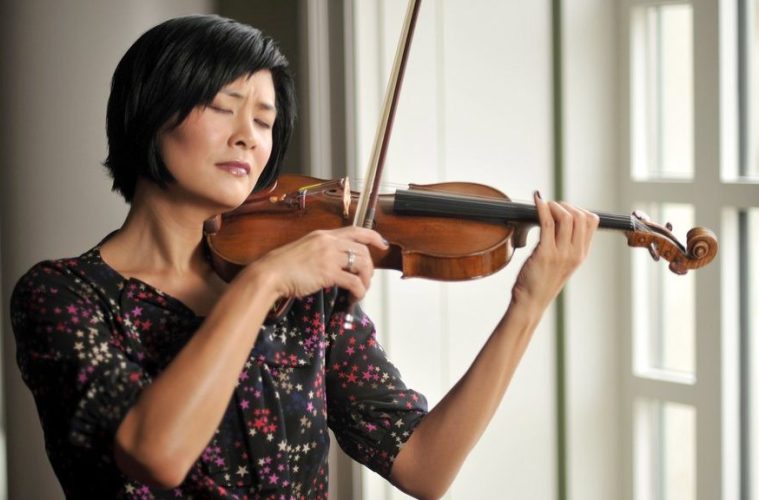Strings Magazine
By Laurence Vittes
April 17, 2018
original
link
Violinist Jennifer Koh Gears Up to Release Music by Kaija Saariaho

Since Jennifer Koh met Kaija Saariaho ten years ago the American violinist and the Finnish composer have collaborated musically and become close friends. Although Koh has a packed schedule this year including Beethoven’s Op. 30 violin sonatas with Shai Wosner in her Bridge to Beethoven project, and premiering Chris Cerone‘s new concerto with the Detroit Symphony May 25–27, the project that is speaking most directly to her heart these days may be her new CD of music by Kaija Saariaho.
The November release on the Cedille label will include the chamber version of Graal Théâtre with the Curtis Chamber Orchestra; Cloud Trio with violist Hsin-Yun Huang and cellist Wilhelmina Smith; Tocar and Light and Matter with pianist Nic Hodges; and Aure with cellist Anssi Karttunen.
But the major piece is Graal Théâtre, the violin concerto which Saariaho wrote in 1994 for Gidon Kremer, which Strings’ Edith Eisler described as ” . . . created entirely from sound effects and color effects . . . exploiting all imaginable, and many unimaginable, resources of the violin and demanding superhuman tonal and technical acrobatics from the soloist.”
On May 3 and 4 Koh will be performing Graal Théâtre with the Indianapolis Symphony. In January she played it with the Galicia Symphony Orchestra conducted by Dennis Russell Davies. I spoke to to Jennifer Koh last week to find out what’s going on.
I once described Saariaho’s music as “cosmic romanticism in which a single sound conceals a universe.” How do you describe Graal Théâtre?
It tells a very human story, as all great music does, and is one of the most visceral pieces I’ve come across; it starts with a cloud of searching sounds and finds beauty in the intensely personal and deeply emotional.
What is it like performing such music live?
I can feel the audience with me as much as I feel the musicians onstage–and there’s something special about that communal experience. In our everyday lives we’re all constantly looking at our phones, our email, and listening to music at the same time, which makes being present harder to do, even though we consider ourselves to be in an age of connectivity. There’s something beautiful for me as a performer about being present with other people sharing a larger experience.
How technically difficult is the solo part?
It’s hard to say because I don’t think about music in terms of how hard it is to play. For me it’s always a question of understanding what the music is saying and learning how to communicate that. With Kaija her music feels very emotionally close so it’s very easy to access.
How do you suggest young musicians get into Saariaho’s mind and music beyond listening to her music?
She’s alive so you can meet her yourself! From the moment I heard her music for the first time—her opera L’Amour de loin on DVD—I felt that I totally understood her, even how she spoke, and especially how she communicated through her music. I knew we would be close friends if we ever met. And from the day we first met that’s what we’ve been. Although when I finally met her for the first time it felt awkward on my side because I had had such a strong premonition.
Last night at National Sawdust in Brooklyn you completed the second installment of your Limitless project of duo commissions performed by yourself and the composers. How did it go?
It went really well, I loved the music [by Lisa Bielawa, Vijay Iyer, Tyshawn Sorey, Nina Young, and Du Yun]. I felt lucky to have been invited to build programs and given the space to present them. Series are wonderful ways to build the world we believe in. Peter Sellars once said to me, “First you imagine the world, and then as an artist you build it, and make it happen.”
Copyright ©2018 Strings Magazine
© Jennifer Koh, All Rights Reserved. Photography by Juergen Frank. Site by ycArt design studio